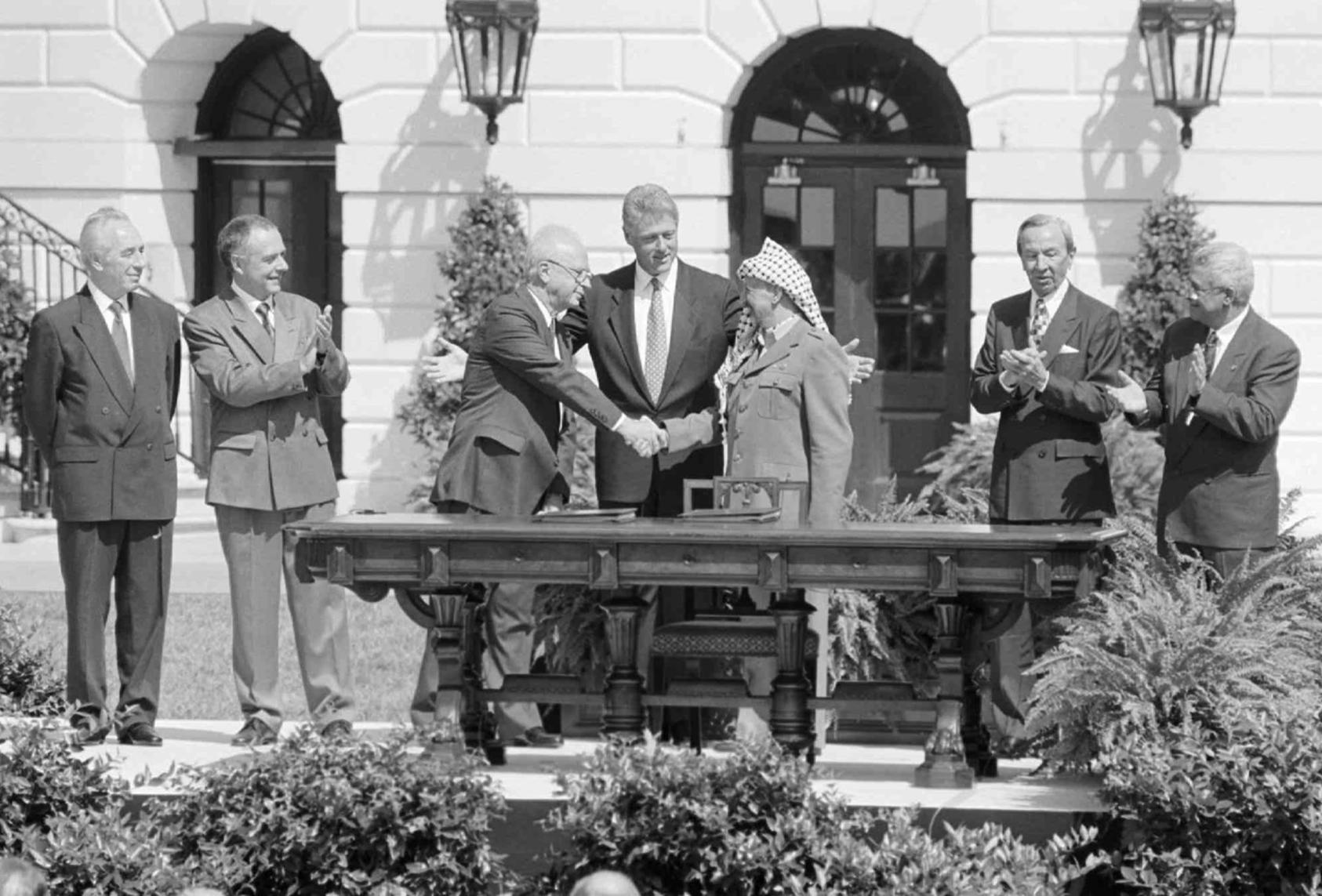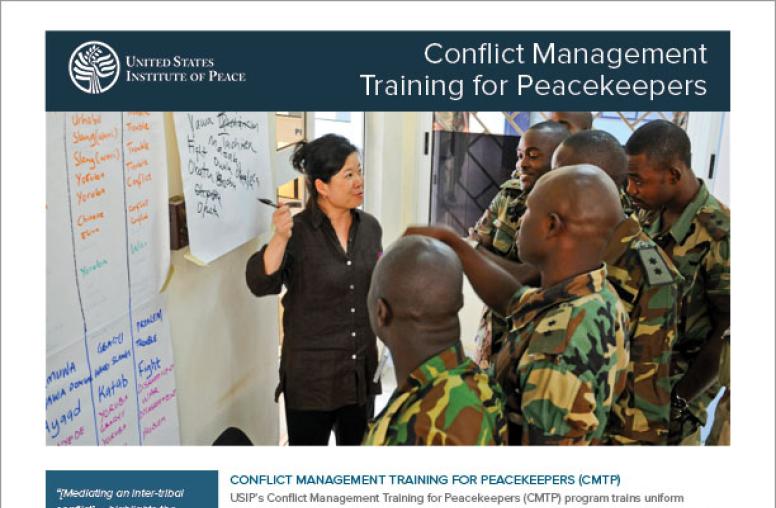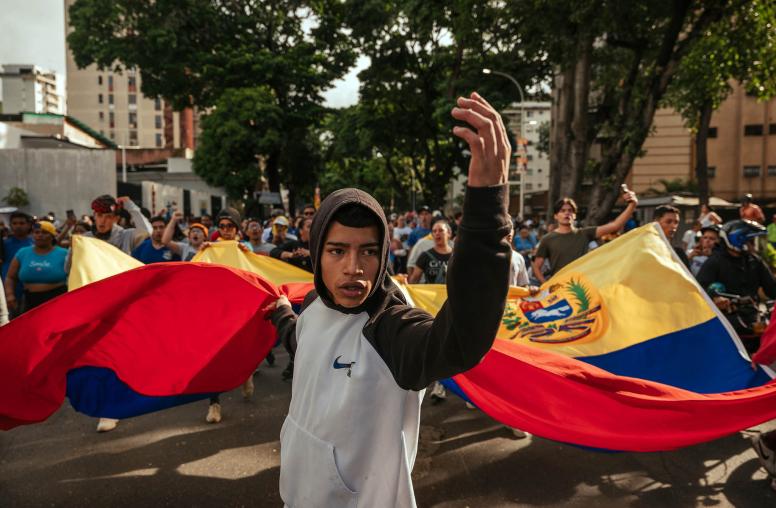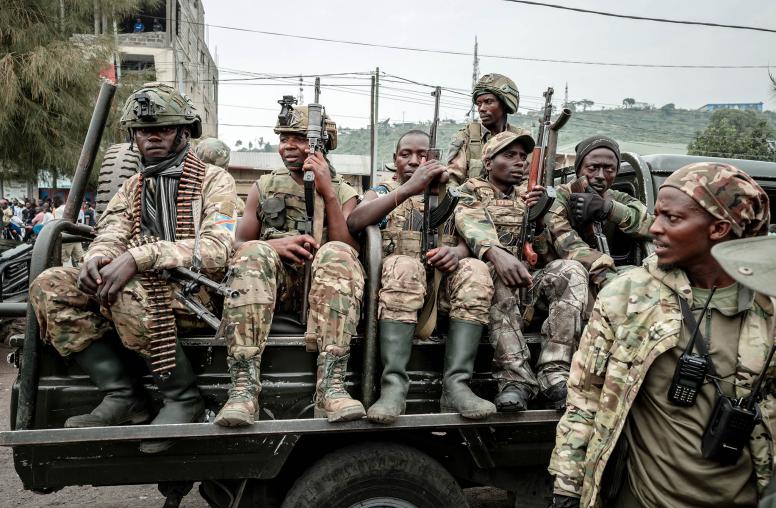A Primer on Multi-track Diplomacy: How Does it Work?
USIP experts look at the increasing use of track 1.5 and track 2 dialogues to address global challenges.
If you asked someone to define diplomacy, chances are they would describe two governments meeting, shaking hands, sitting at a table, and negotiating an official agreement. But that more traditional view of diplomacy is only one iteration, often called track 1 diplomacy. Diplomacy can occur in a number of forms, or “tracks,” that engage various participants, from academics to policymakers to heads of state. In an increasingly complex global environment, peacebuilders and diplomats looking to address difficult policy challenges are increasingly incorporating track 1.5 and track 2 dialogues—often referred to as “back channel” diplomacy—into their strategies.

What exactly do these alternate forms of diplomacy look like in practice? Track 1.5 dialogues are conversations that include a mix of government officials—who participate in an unofficial capacity—and non-governmental experts, all sitting around the same table. On the other hand, track 2 diplomacy brings together unofficial representatives on both sides, with no government participation. Neither track 1.5 nor track 2 discussions carry the official weight of traditional diplomacy, as they are not government-to-government meetings. What they offer is a private, open environment for individuals to build trust, hold conversations that their official counterparts sometimes cannot or will not, and discuss solutions.
Ultimately, such multi-track diplomacy can serve many purposes: it can help to incorporate grassroots and civil society participation when these groups have otherwise been excluded; it can support peace processes; it can maintain a channel of communication when officials are not speaking to each other; and it can be used as a forum for discussing tough policy issues that two or more countries are trying to address. USIP experts with experience in track 1.5 and track 2 diplomacy discuss what accounts for the use of these two tracks, the strengths of these approaches, and what success means.
What is behind the seemingly growing use of track 1.5 and track 2 diplomacy?
Johnny Walsh: To some degree, this reflects the fact that many gatherings that have always occurred—academic exchanges, for example—now often receive the track 2 label. A weightier reason, though, is the seeming proliferation of intractable civil wars, transnational security challenges, and other conflicts around the world, which official diplomacy has struggled to resolve. Peace agreements that formally end wars have, by most measures, become rarer since the 1990s. A growing number of civil wars seem to drag on indefinitely—as in many cases do the official diplomatic efforts to resolve them. A variety of informal mediators have stepped into this perceived void, often in cooperation with private individuals who are close to the various rivals and belligerents, but “unofficial” enough to speak freely.
This can be a powerful combination, even if there are almost always limits to what track 1.5 and track 2 discussions can accomplish before governments and other “official” leaders must take over. There are enough examples of breakthroughs that started with track 1.5 or track 2 dialogues—from the Oslo Accords between Israel and the Palestinians, to the resolution of the Tajikistan civil war, to smaller advances on, say, the North Korea or India-Pakistan conflicts—to make this tool increasingly relevant and popular.
What are the strengths of track 1.5 and track 2 dialogues?
Jennifer Staats: First, let’s look at the strengths of track 1.5 dialogues. They provide a platform for government officials to discuss sensitive issues in their personal capacity, where they can go beyond government talking points and explore new ideas without fear that their comments will be made public. These closed-door discussions help policymakers better understand the motivations and interests of the other actors and get a clearer sense of how their policy initiatives are perceived by their foreign counterparts. Track 1.5 dialogues also provide an opportunity to solicit feedback on “trial balloon” policy ideas and alternative approaches, so that they can be refined and improved before they feed into the official policy process.
Perhaps most importantly, in the event that official track 1 talks break down, track 1.5 platforms provide a valuable channel through which policymakers can continue to share views in a private and unofficial setting.
Regarding the strengths of track 2 dialogues: Although government officials do not participate, this framework also allows for deeper understanding of positions and perceptions, as experts outside of government are able to share their independent and personal views in ways that can later feed into the policy process. In most cases, these participants are familiar with the positions of their respective governments, but are not necessarily expected to assume or defend those policy positions in the dialogue. The absence of government officials can sometimes lead to more open discussions, with a greater likelihood of breaking through a difficult impasse than would be likely if officials were in the room. Further, track 2 dialogues can construct a secondary channel of communication that can help build trust between the same group of participants over a period of years.
Both track 1.5 and track 2 dialogues are most successful when they have some connection to the formal policy process. To increase the utility of track 1.5 and track 2 dialogues, government participants should take what they have learned back to their respective agencies, and non-government participants should be encouraged to share their insights with government officials.
What does track 1.5 and track 2 diplomacy look like in practice and how do you define success?
Rosarie Tucci: Track 2 processes provide unofficial spaces and flexible settings to test ideas and shape relationships. Such efforts can be critical to advancing negotiations when parties are not yet committed to a process, or during negotiations when parties are stuck and looking for alternative ideas to overcome an impasse.
There is wide variation in how this form of diplomacy materializes in practice. Track 1.5 and track 2 dialogues often look different depending upon the stage of the conflict (e.g., preventive, pre-negotiation, negotiation, post-conflict) and the level of participants (e.g., civil society leaders, quasi-government officials). The objectives outlined by the dialogues may also differ, as some are more focused on relationship building while others take a problem-solving or outcome-driven approach, such as establishing a draft agreement, joint statement, or new proposal. In any instance, to be able to define success in track 1.5 and track 2 dialogues, it is important to be clear about the objectives and keep them within achievable limits.
Track 2 processes that tend to be more successful often sequence objectives at different phases of the dialogue or upon changing country context and conflict dynamics. For example, a track 1.5 or track 2 process may begin by creating a platform for the opening of future negotiations, and then evolve into framing for those same negotiations.
More successful track 2 processes consider the importance of diverse stakeholders, work to fill in the gaps of the larger peace effort, and address power asymmetry among participants. They’ll also manage expectations across participants, and—increasingly important—establish and implement what are called “transfer” mechanisms. In other words, the influential participants within a track 2 dialogue and the official mediators of the peace process can often serve as effective transfer channels, exchanging information and ideas developed within the groups to more formal processes, for example with official actors through confidential briefings or memos or to the public through speeches, op-eds, interviews or other inclusion initiatives such as public consultations.
Ultimately, we need to remember that track 1.5 and track 2 processes are part of a larger ecosystem of change, and transfer mechanisms can link these dialogues to broader peace processes or policy discussions underway at multiple levels—from local actions, to the public opinion arena, to other track 2 processes, and to the formal higher-level peace processes and policy discussions.


